




Adjacent to 3223 Donald Douglas Loop

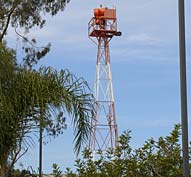
Santa Monica Airport
Rotating Beacon Tower, 1928
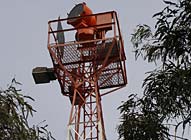
Close up
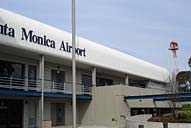
Distant view of Beacon
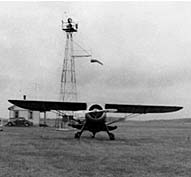
An Airway Beacon and Airfield together
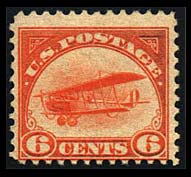
The first Air Mail stamp was issued
on May 15, 1918
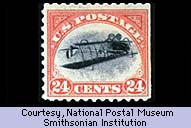
The Inverted Jenny is a 24-cent stamp
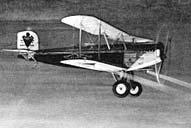
Douglas M-2 mail plane,
Los Angeles to Salt Lake City, 1926
The first aerial mail transportation may be traced back to Paris on September 23, 1870, when 500 pounds of mail were carried out by balloons. This service was not satisfactory, as the balloons could not be controlled and could possibly land in enemy territory, and some of them were never heard of again after leaving Paris.
Manned flight began on December 17, 1903, when Orville and Wilbur Wright were rewarded for four years of research and design efforts with a 120-foot, 12-second flight at Kitty Hawk, North Carolina - the first powered flight in a heavier-than-air machine.
Pilot Earl Ovington flew the first pouch of air mail letters in the US on September 23, 1911. From then forward, the Post Office Department saw the benefits of “air mail.” In 1912, the Post Office requested an appropriation of $50,000 from Congress to start an experimental service. Congress refused.
The airplane progressed during World War I, and strengthened the belief of postal officials that planes could become a means of fast commercial and mail transportation.
Congress appropriated $100,000 for an experimental airmail service as a joint venture between the Army and the Post Office.
With a large number of World War I surplus aircrafts in hand, the Post Office planned transcontinental air service. It opened the first segment between Chicago and Cleveland, on May 15, 1919, and completed the service on Sept. 8, 1920, when the most difficult part of the route, the Rocky Mountains, was spanned. The transcontinental airmail route ran from New York to San Francisco. Intermediate stops were: 2) Bellefonte, 3) Cleveland, 4) Bryan, 5) Chicago, 6) Iowa City, 7) Omaha, 8) North Platte, 9) Cheyenne, 10) Rawlins, 11) Rock Springs, 12) Salt Lake City, 13) Elko, and, 14) Reno.
To "Plane Post" a letter cost 24 cents an ounce in 1918, which included special delivery.
Airplanes still could not fly at night when the service first began, so the mail was handed off to trains at the end of each day. Nonetheless, by using airplanes the Post Office was able to shave 22 hours off coast-to- coast mail deliveries.
In 1921, the Army deployed rotating beacons in a line between Columbus and Dayton, Ohio, a distance of about 80 miles. The beacons, visible to pilots at 10-second intervals, made it possible to fly the route at night.
The Post Office took over the operation of the guidance system the following year, and by the end of 1923 constructed similar beacons between Chicago and Cheyenne, WY, a line later extended coast-to-coast at a cost of $550,000. Mail could then be delivered across the continent in as little as 29 hours eastbound and 34 hours westbound - two to three days less than it took by train.
During 1923, the U. S. Army Air Service continued to develop necessary equipment. The General Electric Company, the American Gas Accumulator Company, and the Sperry Instrument Company developing illuminating equipment of various kinds. Soon, 289 flashing gas beacons were installed between Chicago and Cheyenne; 34 emergency landing fields between the same points were rented, equipped with rotating electric beacons, boundary markers, and telephones; 5 terminal landing fields were equipped with beacons, floodlights and boundary markers; 17 planes were equipped with luminous instruments, navigation lights, landing lights and parachute flares.
In 1926, a 36-inch-high intensity arc revolving searchlight of approximately 500,000 candlepower was installed on a 50-foot tower at the regular fields. This great beacon, set at a fraction of a degree above the horizon, revolved at the rate of three times per minute and on clear nights could be seen by the pilots for a distance of 130 to 150 miles.
An 18-inch rotating beacon of approximately 50,000 candle power, mounted on top of a 50-foot windmill tower, was installed at each emergency field. This beacon was also set at a fraction of a degree above the horizon, revolving at the rate of six times a minute, and was visible to the pilots on clear nights from 60 to 70 miles. These high-intensity lights shined en route, making a connect-the-dot puzzle, to the next mail drop.
Small gas beacons were located approximately every three miles in between the emergency and regular or terminal fields, to guide the pilot on the route. They flashed at the rate of 60 times a minute and received their light power from cylinders of acetylene gas, which were renewed about every five or six months.
By the mid-‘20s the Post Office mail fleet was flying 2.5 million miles and delivering 14 million letters annually.
Once the feasibility of airmail was firmly established, and airline facilities were in place, the government moved to transfer airmail service to the private sector by way of competitive bids. The 1925 Contract Air Mail Act, was the first major legislative step toward the creation of a private U.S. airline industry. Winners of the initial five contracts were National Air Transport (owned by the Curtiss Aeroplane Co.), Varney Air Lines, Western Air Express, Colonial Air Transport, and Robertson Aircraft Corporation. National and Varney would later become important parts of United Airlines (originally a joint venture of the Boeing Airplane Company and Pratt & Whitney). Western would merge with Transcontinental Air Transport (TAT), another Curtiss subsidiary, to form Transcontinental and Western Air (TWA). Robertson would become part of the Universal Aviation Corporation, which in turn would merge with Colonial, Southern Air Transport and others to form American Airways, predecessor of American Airlines.
Between 1926-30, 14,500 miles of lighted highways had been created. Maintenance of the airway beacons and intermediate fields was entrusted to Airway Caretakers. Daily they climbed the 51-ft. steel towers to check every beacon within their territory, cleaned dirty lenses, replaced burned-out bulbs, etc.
Caretakers at intermediate fields were on duty from 6:00 pm to 6:00 am. If a pilot "dropped" into one of these emergency fields, caretakers were expected to provide transportation to and from town, furnish them with meals, and assist in repairing their aircraft.
In October 1931, D. C. Young of the Airways Lighting Sub-Committee recapped the progress of lighted airways at a lighting conference in Pittsburgh, Pa. "Ten years ago, a scheduled night flight by airplane across the United States was only a dream. Now, such flights occur nightly, and on scheduled time. The converting of this hazardous journey into one of comparative safety ... is the achievement of constructing aerial highways for the airman.”
Excerpts from:
“A BRIEF HISTORY OF THE AIR MAIL SERVICE OF THE U. S. POST OFFICE
DEPARTMENT”
(May 15, 1918 -- August 31, 1927)
edited by Edward A. Keogh -- 1927